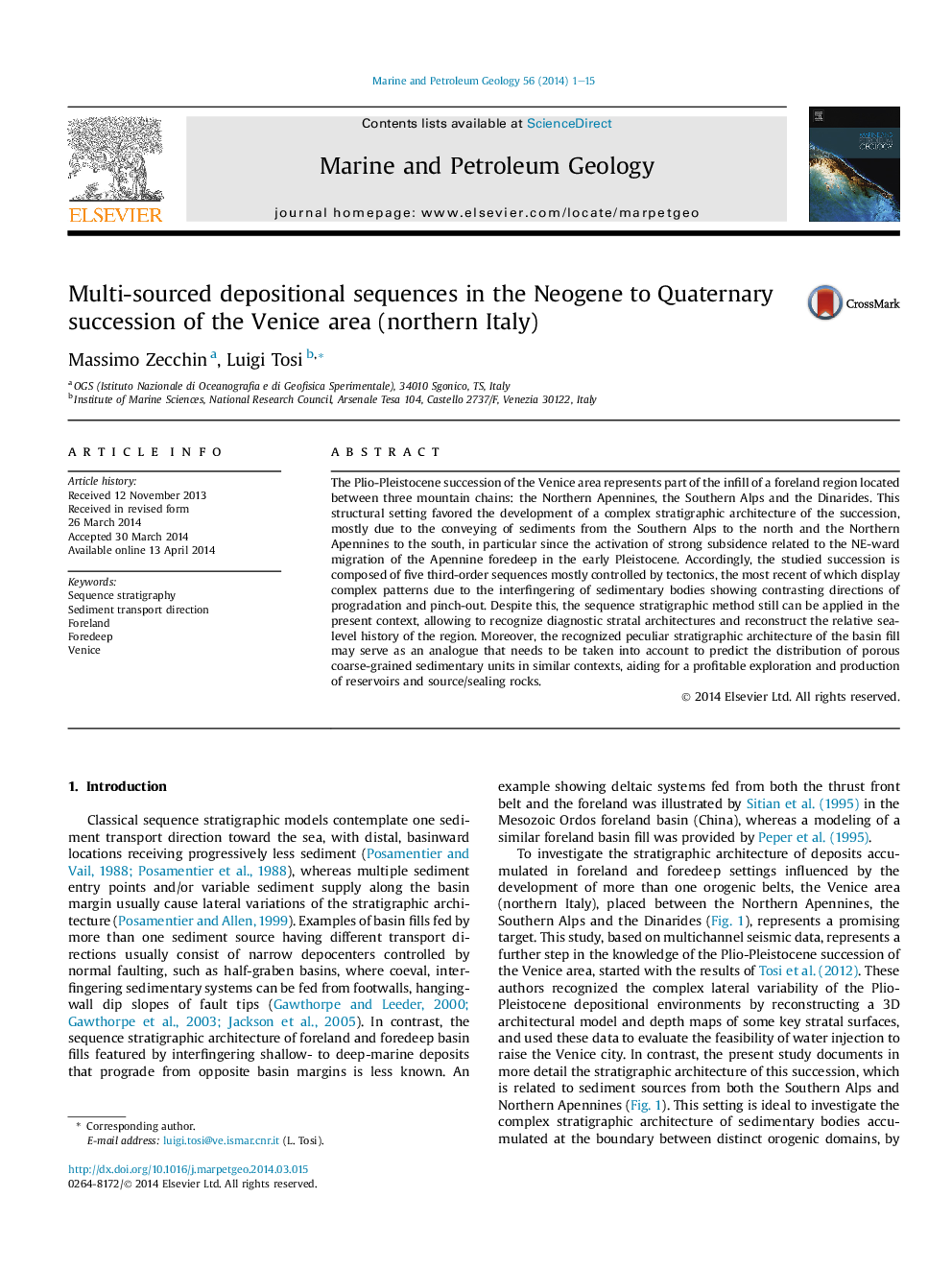| Article ID | Journal | Published Year | Pages | File Type |
|---|---|---|---|---|
| 6435268 | Marine and Petroleum Geology | 2014 | 15 Pages |
â¢The Plio-Pleistocene depositional sequences of the Venice area are documented.â¢The conveying of sediment from north and south is responsible for the recognized architecture.â¢The relative sea-level changes in the region are reconstructed.
The Plio-Pleistocene succession of the Venice area represents part of the infill of a foreland region located between three mountain chains: the Northern Apennines, the Southern Alps and the Dinarides. This structural setting favored the development of a complex stratigraphic architecture of the succession, mostly due to the conveying of sediments from the Southern Alps to the north and the Northern Apennines to the south, in particular since the activation of strong subsidence related to the NE-ward migration of the Apennine foredeep in the early Pleistocene. Accordingly, the studied succession is composed of five third-order sequences mostly controlled by tectonics, the most recent of which display complex patterns due to the interfingering of sedimentary bodies showing contrasting directions of progradation and pinch-out. Despite this, the sequence stratigraphic method still can be applied in the present context, allowing to recognize diagnostic stratal architectures and reconstruct the relative sea-level history of the region. Moreover, the recognized peculiar stratigraphic architecture of the basin fill may serve as an analogue that needs to be taken into account to predict the distribution of porous coarse-grained sedimentary units in similar contexts, aiding for a profitable exploration and production of reservoirs and source/sealing rocks.
